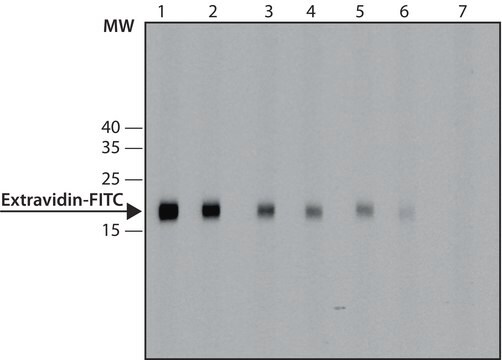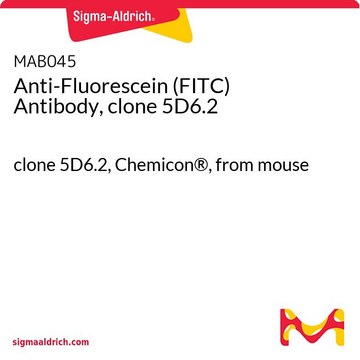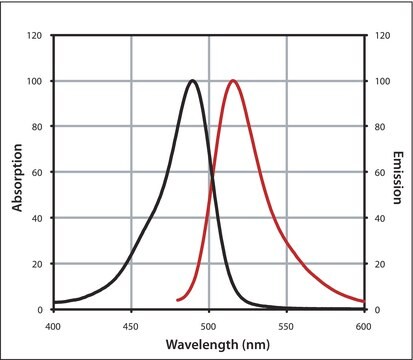B0287
Monoclonal Anti-FITC−Biotin antibody produced in mouse
clone FL-D6, purified immunoglobulin, buffered aqueous solution
Sinonimo/i:
Monoclonal Anti-FITC
About This Item
Prodotti consigliati
Origine biologica
mouse
Livello qualitativo
Coniugato
biotin conjugate
Forma dell’anticorpo
purified immunoglobulin
Tipo di anticorpo
primary antibodies
Clone
FL-D6, monoclonal
Stato
buffered aqueous solution
tecniche
immunohistochemistry (formalin-fixed, paraffin-embedded sections): 1:400 using human tonsil
Isotipo
IgG1
Condizioni di spedizione
dry ice
Temperatura di conservazione
−20°C
modifica post-traduzionali bersaglio
unmodified
Cerchi prodotti simili? Visita Guida al confronto tra prodotti
Descrizione generale
Specificità
Immunogeno
Applicazioni
- for amplification of signal in immunofluorescence assays
- in Ag-activated beads for flow-based micro immunoassay of parathyroid hormone and IL-5
- enzyme linked immunosorbent assay (ELISA)
Azioni biochim/fisiol
Stato fisico
Esclusione di responsabilità
Non trovi il prodotto giusto?
Prova il nostro Motore di ricerca dei prodotti.
Codice della classe di stoccaggio
10 - Combustible liquids
Classe di pericolosità dell'acqua (WGK)
WGK 3
Punto d’infiammabilità (°F)
Not applicable
Punto d’infiammabilità (°C)
Not applicable
Scegli una delle versioni più recenti:
Possiedi già questo prodotto?
I documenti relativi ai prodotti acquistati recentemente sono disponibili nell’Archivio dei documenti.
Il team dei nostri ricercatori vanta grande esperienza in tutte le aree della ricerca quali Life Science, scienza dei materiali, sintesi chimica, cromatografia, discipline analitiche, ecc..
Contatta l'Assistenza Tecnica.








